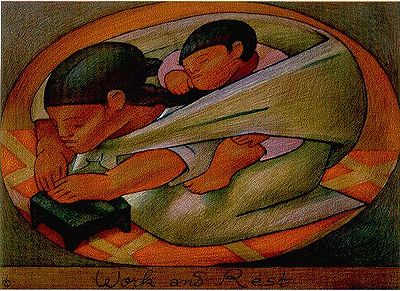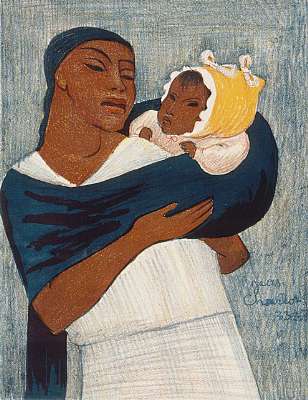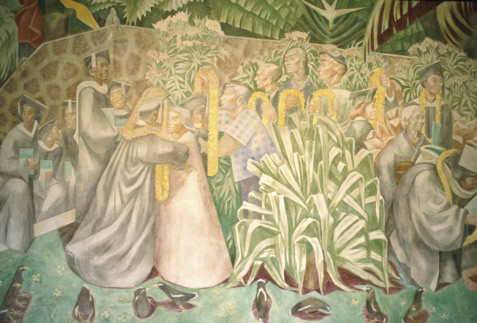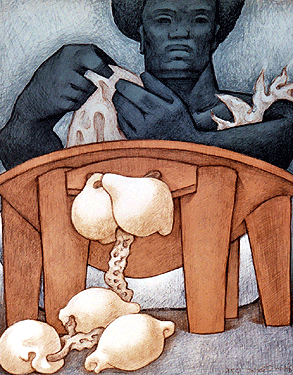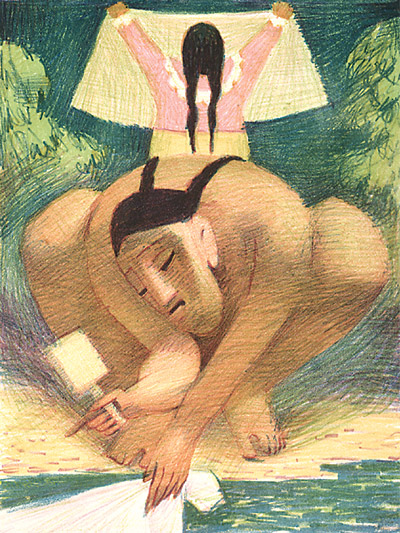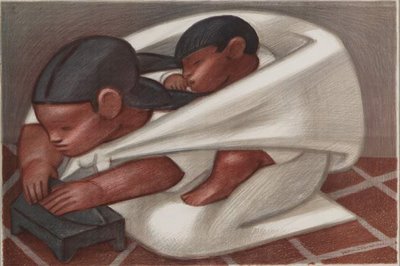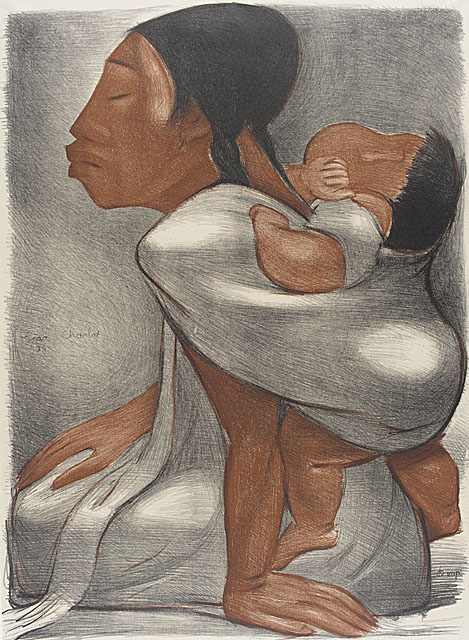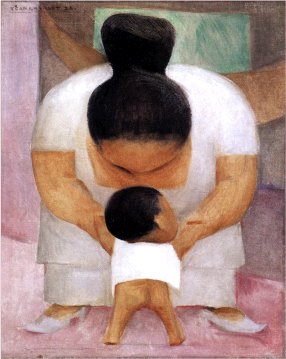<Back to Index>
- Painter Pablo Esteban O'Higgins, 1904
- Painter José Chávez Morado, 1909
- Painter Louis Henri Jean Charlot, 1898
PAGE SPONSOR
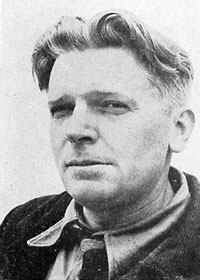
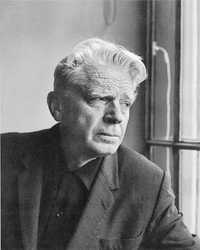
Pablo Esteban O'Higgins (born Paul Higgins Stevenson; March 1, 1904 - July 16, 1983) was an American - Mexican artist, muralist and illustrator.
Born in Salt Lake City, Utah, O'Higgins was raised there and in San Diego, California. In 1922 he abandoned his first career as a pianist and entered the Academy of Arts in San Diego. Within two years he had become a student of Diego Rivera, assisting Rivera on his murals at the National School of Agriculture at Chapingo, and the Public Education Secretariat.
Like Rivera, O'Higgins became an active member of the Mexican Communist Party. He immigrated to Mexico permanently in 1924, joined the party in 1927, and maintained his party membership until 1947. His political illustrations for the Daily Worker won him a year's study at the Academy of Art in Moscow on a Soviet Scholarship in 1933.
In 1937, O'Higgins was the co-founder, with fellow artists Leopoldo Méndez and Luis Arenal, of the Taller de Gráfica Popular ("People's Graphic Workshop"). In May 1940 he had the honor of being the only non - native Mexican artist with work included in the seminal "Twenty Centuries of Mexican Art" exhibit organized by the Museum of Modern Art.
In 1961 O'Higgins was awarded honorary Mexican citizenship for "his contributions to the national arts and education". His mural work can be seen at the Abelardo L. Rodriguez Market, Mexico City, and his 1945 "Struggle Against Racial Discrimination" is installed in Kane Hall at the University of Washington in Seattle.
Among O'Higgins' students was the American graphic designer Bob Cato.
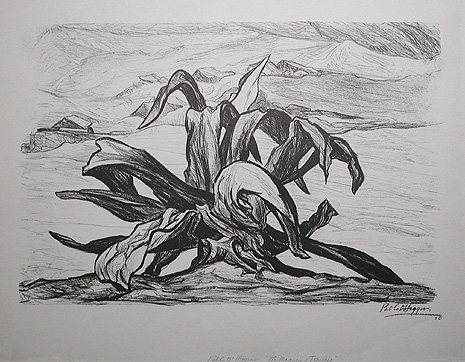
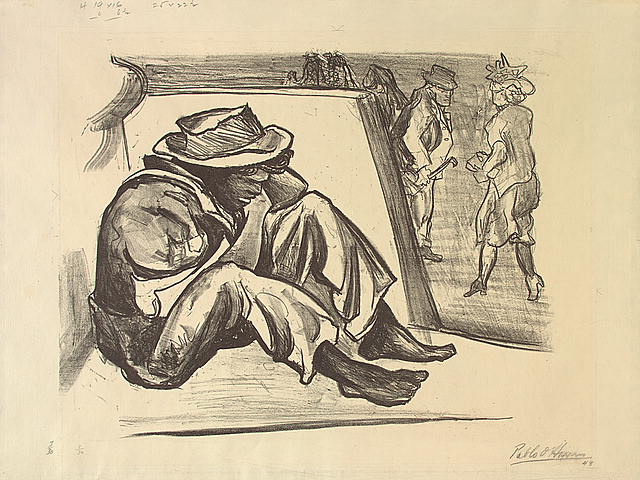
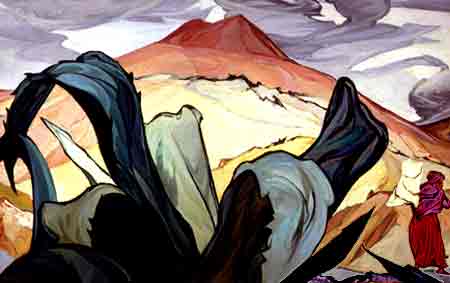
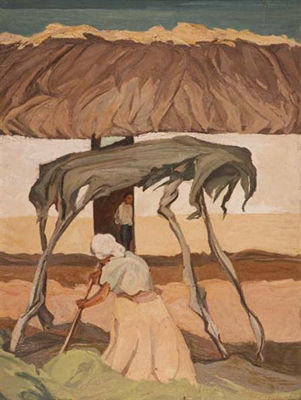
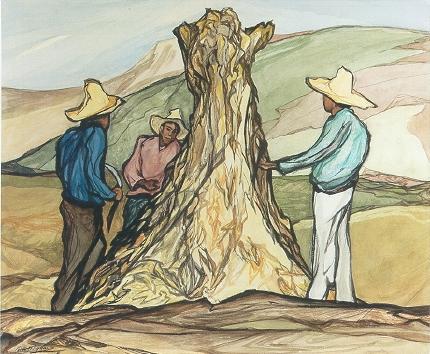
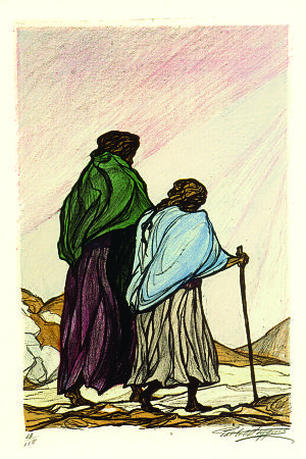
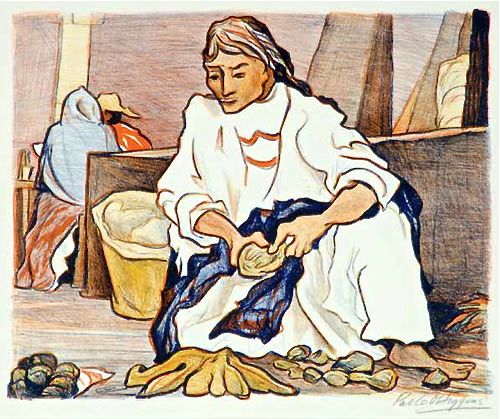
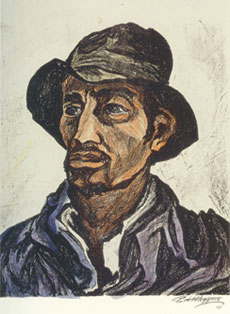
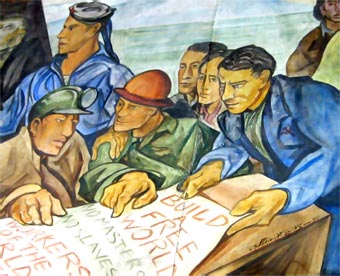
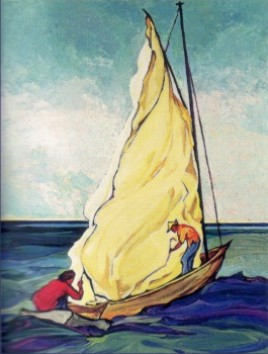
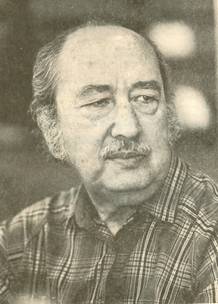
José Chávez Morado (born January 4, 1909, Silao - died December 2, 2002, Guanajuato) was a Mexican painter and sculptor.
Morado was born in Silao, near the city of Guanajuato, where Diego Rivera was born, and like Rivera he is a well known and highly regarded painter and sculptor who became most famous for the murals he painted in Mexico in the first half of the 20th Century.
In 1925, young Morado took a train to the United States to find work. He worked odd jobs in Canada and all the way to Alaska. During a stay in Los Angeles he started studying drawing at the Chouinard School of Arts. He also met José Clemente Orozco at the Pomona College. In 1931, he was awarded a grant by the government of Guanajuato to study at the Escuela Nacional de Artes Plásticas under Francisco Díaz de León, Bulmaro Guzman and Emilio Amero. In 1935, he married a German exile living in Mexico by the name Olga Costa. In 1937, he joined the communist party and a year later he became a member of the Taller de Gráfica Popular with Lola Alvarez Bravo, Carlos Alvarado Lang, Isidoro Ocampo and María Izquierdo among others.
His first solo show was held in 1944 at the Galería de Arte Mexicano. In 1949, he traveled to Europe to study mosaics and a year later he returned to Mexico to build some of the most beautiful mosaic murals in the country. His most famous works can be seen at the Universidad Nacional Autónoma de México, the Quetzalcoatl mural at the Centro Medico Siglo XXI, the tower in the patio of the Museo Nacional de Antropologia e Historia and his own personal favorite, the murals at the Alhóndiga de Granaditas in Guanajuato.
He started working with sculpture in 1960 and created several monumental works in bronze. He was awarded the Premio Nacional de las Artes in 1974 and in 1985 an honorary degree from the UNAM.
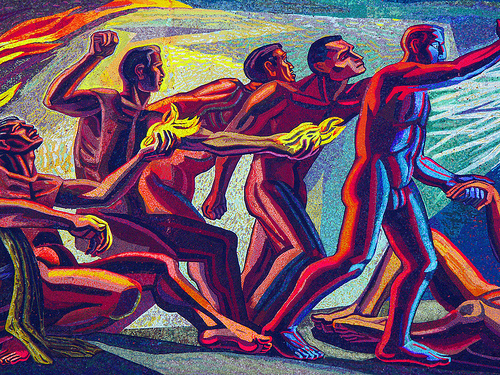
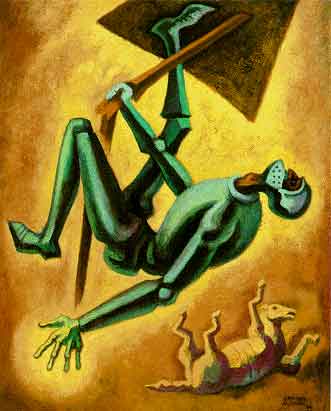
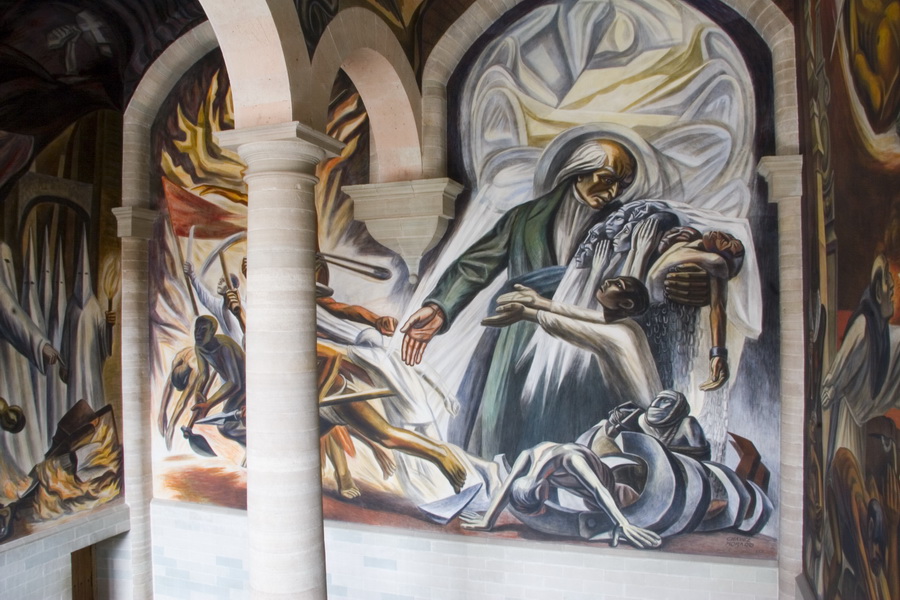
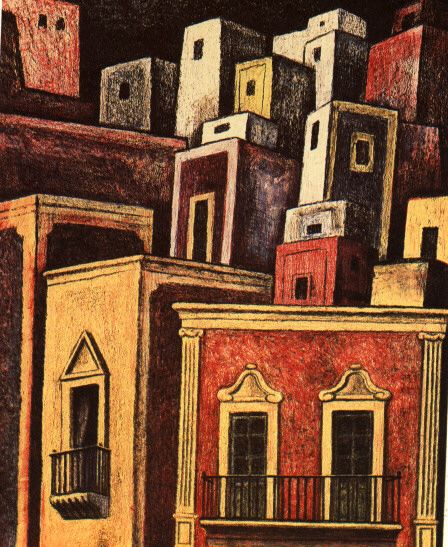
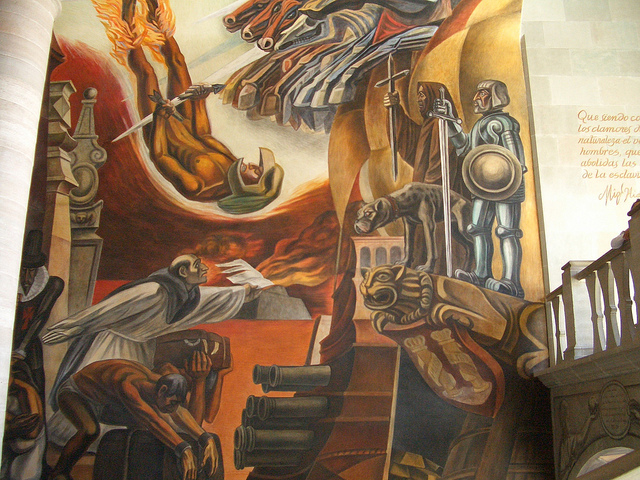
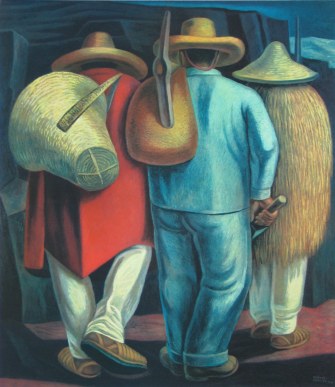
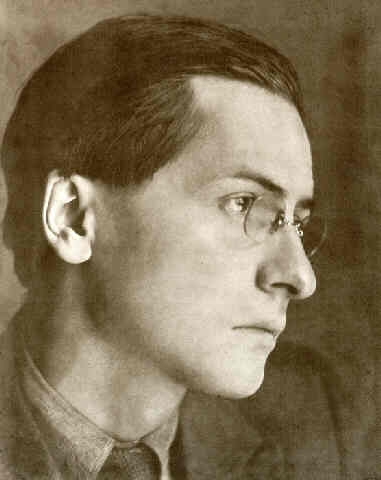
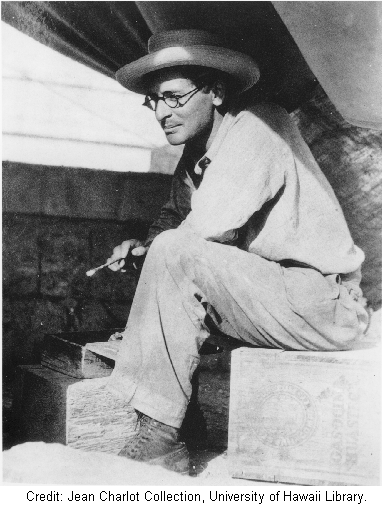
Louis Henri Jean Charlot (February 8, 1898 - March 20, 1979) was a French painter and illustrator, active in Mexico and the United States.
Charlot was born in Paris. His father, Henri, owned an import - export business and was a Russian born émigré, albeit one who supported the Bolshevik cause. His mother Anna was herself an artist. His mother's family originated from Mexico City, his grandfather a French - Indian mestizo.
Charlot spent an extensive period of his life living and working in Mexico. In 1921, he and his mother left Europe to settle in Mexico City. He met Fernando Leal (1896 - 1964) and shared his studio with him. He also started avant garde woodcuts and, after Leal's invitation, participated in the founding of Mexican muralism with his fresco "The Massacre of the Templo Mayor" (1921 - 1922), in front of Fernando Leal's "The Dancers of Chalma" (1921 - 23). In his fresco Charlot portrayed himself, Leal and Rivera. He also worked as an illustrator during the excavations at Chichen Itza under Sylvanus Morley.
He spent some time working for the Work Projects Administration's Federal Arts Project, including creation of murals for Straubenmuller Textile High School in Manhattan during 1934 - 1935. In 1942 he painted an oil on canvas mural for the post office in McDonough, Georgia: "Cotton Gin", 4.5 × 11 ft (1.4 × 3.4 m). In 1949, Charlot relocated to Hawaii to become a professor of art at the University of Hawaii at Manoa. He continued to live and work there until his death in 1979. Abstract Expressionist Kenneth O. Goehring and Jean's son Martin Charlot were among his students.
Charlot came to Colorado Springs, Colorado, in 1947 to take the job as Head of the Art School of the Colorado Springs Fine Arts Center. He taught fresco painting and worked with Lawrence Barrett on several editions of lithographs. While there he also taught art at The Fountain Valley School, an independent school for boys (at that time), founded in 1930. Charlot left the Fine Arts Center in 1949 under a cloud of misunderstandings between himself and the Arts Center's Board or Trustees and the Art Center's director, Mitch Wilder. Charlot then went to teach at the University of Hawaii where he stayed for over 30 years, teaching art. During the summer of 1969, Charlot worked with Tony Smith at UH and Smith thanked him by creating a piece in the For... series for Charlot; For J.C.
The Fine Arts Museums of San Francisco, the Hawaii State Art Museum, the Honolulu Academy of Arts, the Isaacs Art Center (Waimea, Hawaii), and the University of Hawaii at Manoa library are among the public collections having works by Jean Charlot.
In 1940 he illustrated the book Tito's Hats (Garden City Publishing), which was written by the future actor Mel Ferrer. Boucher and McComas praised his 1951 collection of captioned drawings, Dance of Death,
as "superlative macabre humor in a welcome modernization of a great
ancient art - form." Charlot also illustrated the book 'Springtime,
Tales of the cafe Rieu' by J.B. Morton in 1956.
